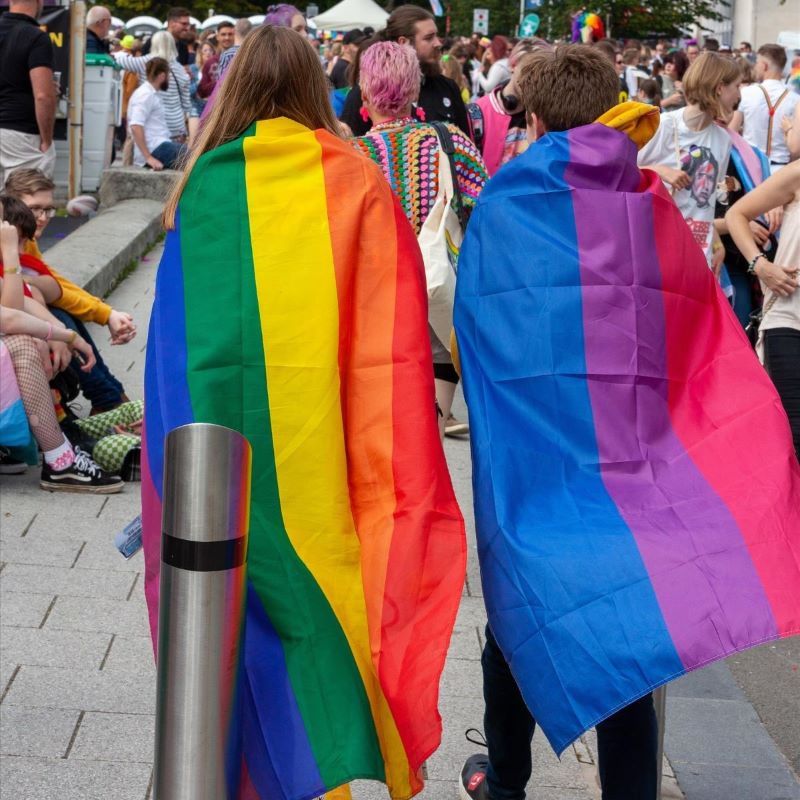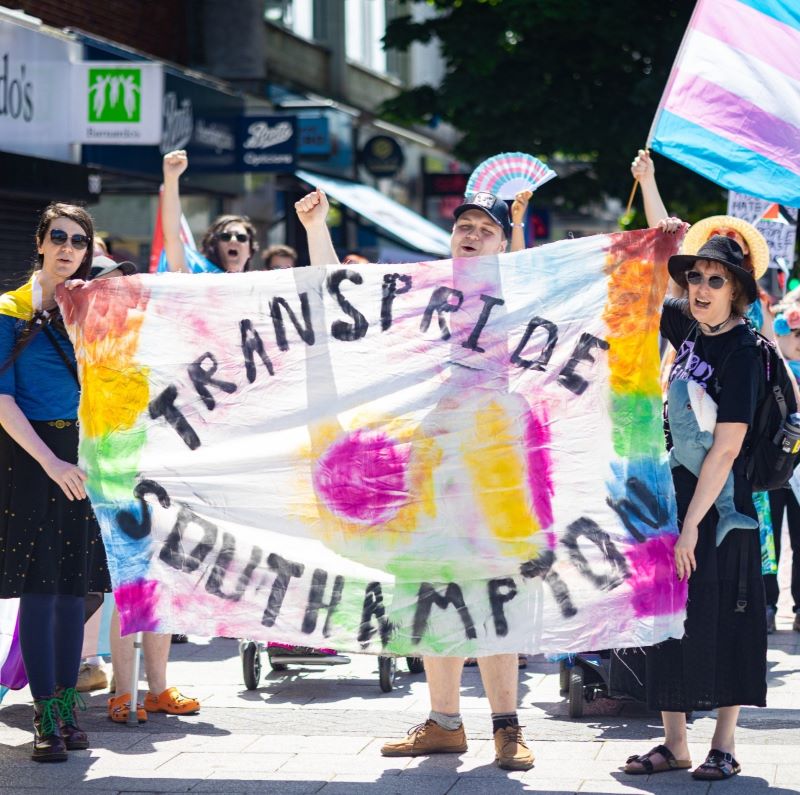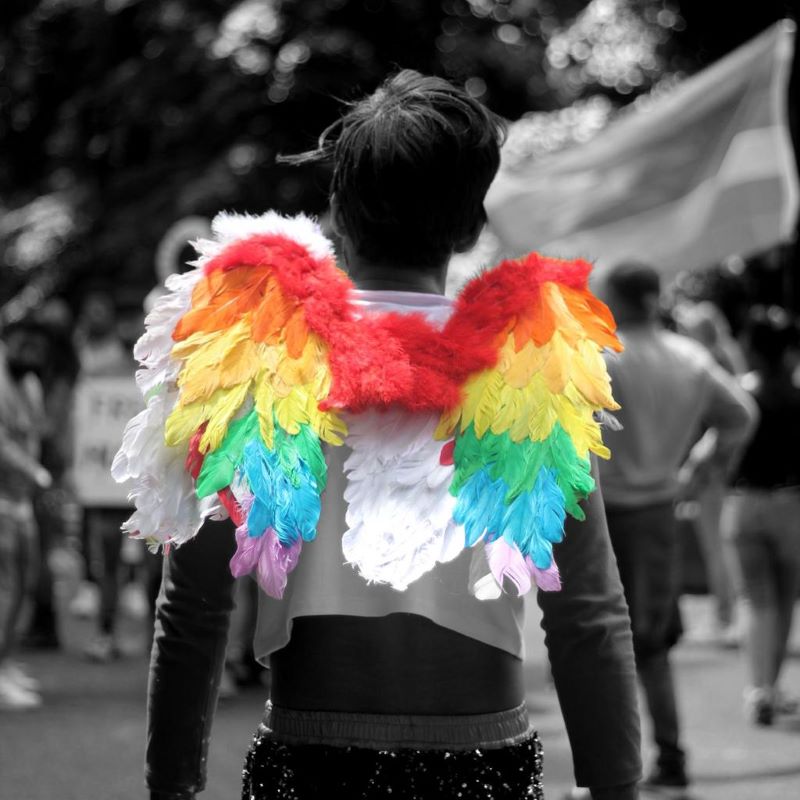As LGBT History Month continues, we will be talking about the transition of the LGBT liberation movement from the “”Homophile” Movement to the far more radical and political movement after The Stonewall Riots.
The word “homophile” was coined to be used in lieu of homosexual. By including “phile” from the Greek philos (to love), the term existed to try to help distance same sex attracted people from terms focusing on sex and hopefully help appeal better to straight people by instead focusing on the romantic aspect of this attraction. These groups immediately started to form across Europe and America after the end of the Second World War. The groups were politically coy and – which sounds quite shocking today – a lot of groups were dominated by allies lobbying for LGBT equality reform whilst LGBT members may have been discouraged from taking larger responsibilities due to the societal, financial, and especially at this time, legal consequences.
One notable group in this early LGBT rights movement was The Mattachine Society in the USA. The group, which was actually multiple unaffiliated groups or chapters in America, started off as very secretive due to the severe punishments for being LGBT at the time in America. The Mattachine Society started as a group for discussions around members’ queer experiences and the difficulties faced and from that the group very cautiously became an advocate for queer rights through information campaigns and legal routes such as helping with cases of entrapment by police (where accepting the offer of a drink by a undercover police officer could have you arrested for being gay). Some members, especially in the San Francisco chapter, eventually became more political and prominent after taking inspiration from the black civil rights movement and used methods such as picketing and sit-ins in the fight for queer rights. However, like many of the groups at the time, they were criticised for being too traditional and conservative, ultimately their activism fizzled out in the 70s.

In the UK, the Homosexual Law Reform Society is an example of a group in the Homophile Movement which campaigned to decriminalise homosexuality from 1958 by raising awareness of the inequality that was faced. After some effort, homosexuality was partially decriminalised in 1967. However, the group was criticised for not going far enough with their campaigns. Ultimately, despite their work there was still much inequality between the rights of queer and straight couples. A huge issue that remained was the age of consent being higher for same sex partners compared to straight ones (being 21 rather than 16) – this inequality was not fully corrected until 2000!
During this time, queer people were suffering and being victimised greatly. At this time in the USA it remained illegal to be homosexual, as previously mentioned, even accepting a drink off of somebody could be enough evidence to have you harassed and arrested by the police. It was also illegal to wear clothes or makeup that did not match your gender assigned at birth, meaning transgender people would also face a similar maltreatment, particularly trans women under the crime of “female impersonation”. These arrests would, whilst being relatively minor charges, would often lead to victims being outed in their community and losing their jobs; and even their friends and family. This saw queer people accepted in some venues like coffee shops and bars, but queers were discriminated against and made to feel unwelcome from so many more. Whilst larger Homophile groups were slow to take to the streets to demonstrate against this poor treatment, there were a number of small skirmishes in parts of America, where tensions would soon boil over in the Stonewall Riots.
The first of these is said to have happened in May 1958 or 1959, in Cooper Do-nuts in Los Angeles (not part of the Coopers chain). One night two police officers arrived at the donut shop and started to ID patrons. Their spoils for the night were five patrons of whom were said to be two gay sex workers, two drag queens and a gay man cruising. As these patrons were being arrested, other patrons (in their disgust over the treatment of these queer people) started to fight back. Coffee, donuts, menus were all hurled at the police officers – who ultimately had to give up with their arrest. Patrons then took to the street to celebrate the battle they had won.
In 1965, a number of sit-ins happened at a restaurant called Dewey’s in Philadelphia. At the time the restaurant had just released a policy barring LGBTQI+ individuals or individuals that were not conforming to gender norms, such as masculine women. These sit-ins were directly inspired from the sit-ins by black civil rights activists. Not much is known about who organised the first sit-in, but following the arrest of three teenagers after this first one, where between 150-200 people attended the sit-in and refused to leave, members of a grassroots Homophile group called The Janus Society helped organise a second sit-in and gave out approximately 1500 flyers to promote the event to fight for queer inclusion at the restaurant. After this second sit-in, Dewey’s reversed the anti-LGBTQIA+ policy.
Also in the 1960s there were a series of incidents in Compton’s Cafeteria in Tenderloin, San Francisco. Staff at the restaurant would frequently call the police on transgender patrons, who they felt were causing the company to lose business and were loitering. Trans patrons would also be charged a service fee which cisgender patrons would not be subjected to. In retaliation, a youth run queer activism group called Vanguard held pickets outside the business for making queer patrons feel so unwelcome. Much like at Coopers, one night in 1966, police were called and a trans woman was grabbed and attempted to be arrested. The woman threw her coffee in the police officer’s face, and the entire restaurant erupted. Cups, shakers, cutlery and more were thrown at the police, and a glass window was smashed. The fights spilled out onto the streets and amid the fights against the police, a newsstand was set on fire. Unfortunately, the cafeteria did not back down in their treatment of transgender patrons and within a few years of continued picketing by Vanguard, the restaurant closed down.

Much like the three above examples, the police conducted a raid at the Stonewall Inn early in the morning of 28th June 1969. The venue, which was popular as the only gay venue that allowed dancing, had some 150-200 patrons inside, who were lined up to have their ID verified – this check would immediately have any trans people, drag queens or gender conforming people lead to being arrested. One possible factor to how the night went could be that the police had to hold people in Stonewall for over quarter of an hour waiting for police wagons; this led to a large crowd gathering before arrested people could be taken into custody. This crowd booed and jeered whilst patrons were taken away or released into the crowd. As the crowd saw more harassment yet again by the police, violence started to break out. Projectiles were thrown, fires were started, and chants of “Gay Rights!” sounded out as patrons successfully resisted their arrest (and humiliation) and chased away the police. A second night of rioting occurred, before a following, more calm, three further days of activity between queers and police.
Despite the uprising officially ending on July 3rd 1969, activity between queer groups did not end. People were urgent to keep the moment going for pro-queer activism following the fightback. The Gay Liberation Front was formed just after the Stonewall Riots, which was radically different to older groups like Sisters of Bilitus which purposely chose names that were not obviously queer. The new groups methods of activism were also very different, the GLF and many other grassroots groups that were quickly being created like STAR, included far louder and more numerous protests, as well as working with political groups like the Black Panthers on mutual causes and liberation.
The Stonewall Riots are sometimes referred to as “the death of the Homophile Movement”. When looking at the old Mattachine Society, who wouldn’t even let queer couples hold hands in their marches where everyone would wear suits and ties, it is easy to see why this is the case. Many members of the Mattachine Society even felt embarrassed by the violence during Stonewall, and feared that the violence and loudness of the riots would set queers even further back.
Regardless of any concerns, a new brand of queer activism was born. The following year, the world’s first Gay Pride parade was held on the 28th June 1970 – which was referred to as Christopher Street Liberation Day in memory of the Stonewall Riots. In following years, a growing number of cities in America held Pride events to fight for queer acceptance, growing of queer communities and support of political activism, which quickly grew to become numbers of countries around the world which is still growing to this day.
This is currently one of the most contentious years so far for queer rights. Especially in the USA right now where trans rights are being stripped back and the rights of every other minority group (which were hard fought for) are at risk. So it is especially important to remember this year that these rights were not won with decades of trying to appeal to the majority, by conforming and jumping through ever growing numbers of hoops or trying to fight “smarter not harder” to try and earn dignity. It was through fighting, marching through the streets, being loud and proud, and standing up for injustice when you see it.
If you are someone reading this who considers yourself an ally, or maybe you’re a friend or family member to somebody who is queer, and you see the turning tide against queer acceptance even outside of the USA (such as in the UK where transphobia is growing) ask yourself this: if you saw a queer person being treated unfairly, would you throw a donut to protect them?
- In Common is not for profit. We rely on donations from readers to keep the site running. Could you help to support us for as little as 25p a week? Please help us to carry on offering independent grass roots media. Visit: https://www.patreon.com/incommonsoton

